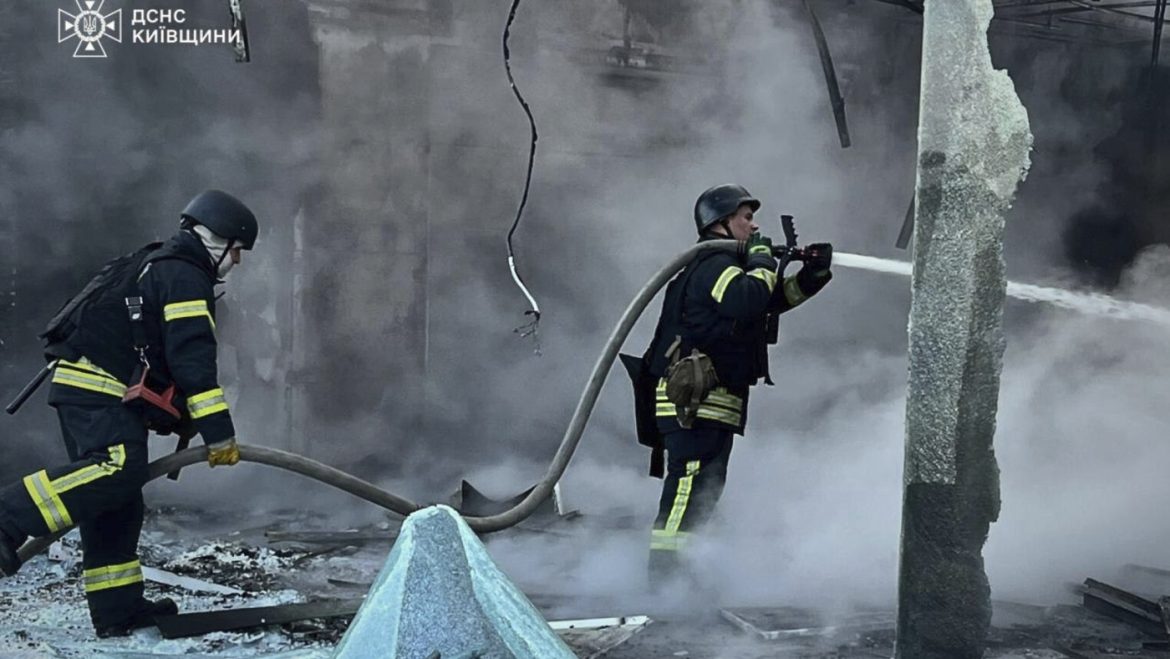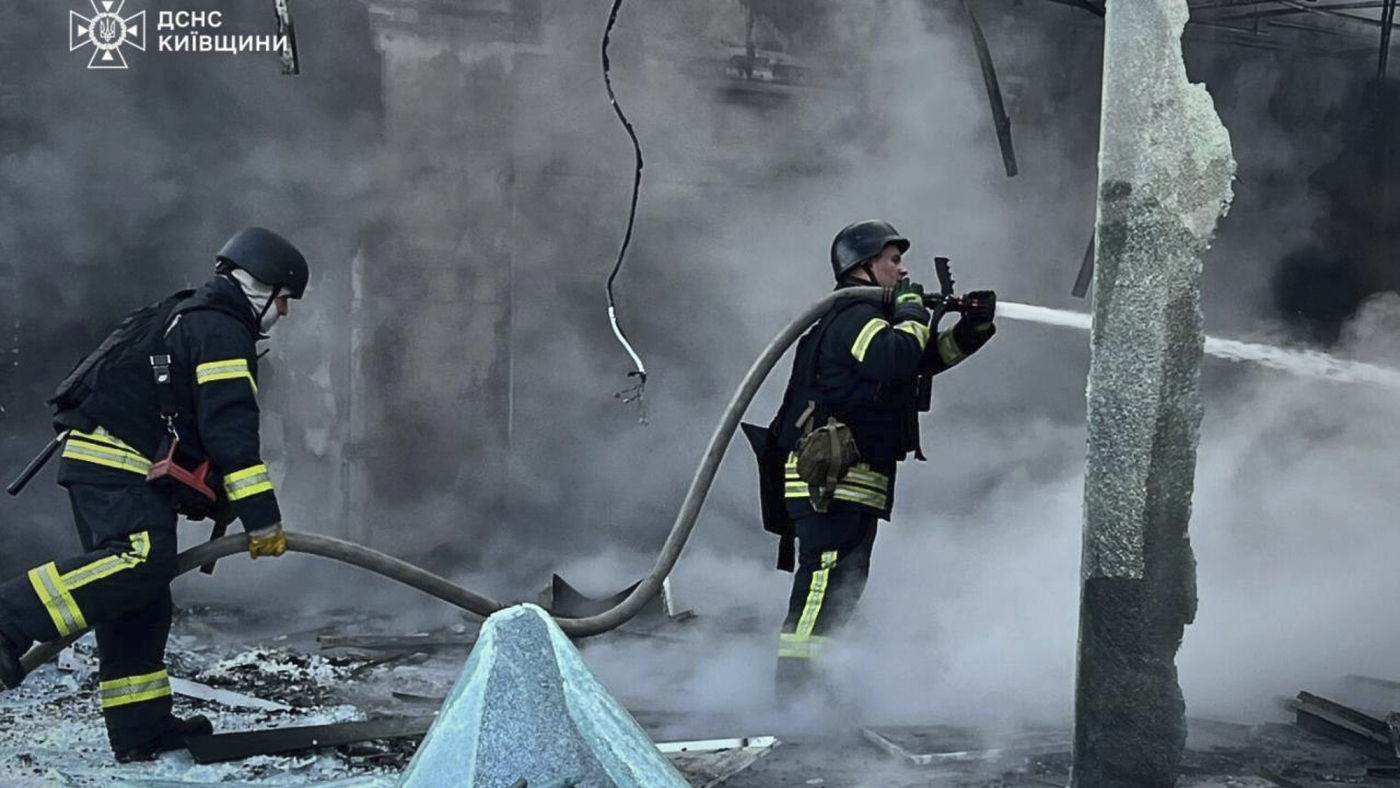Diplomatic Momentum Amid Escalation: Zelenskyy and Vance Meet in Rome Following Russia’s Largest Drone Attack on Ukraine
The ongoing conflict between Russia and Ukraine has taken another dramatic turn, underscored by a significant diplomatic engagement in Rome just hours after Russia launched its most extensive drone barrage since the war began in early 2022. This event not only highlights the ever-intensifying military confrontation but also reflects increased diplomatic activity aimed at seeking avenues toward peace.
—
A Massive Drone Attack: An Unprecedented Military Escalation
Russia intensified its military operations against Ukraine by deploying its largest drone attack since the start of the full-scale invasion in February 2022. Reports indicate this barrage involved around 273 drones, surpassing the previous record set on the eve of the war’s third anniversary when 267 drones were launched. The drone strike targeted vital infrastructure, including energy systems in the Kherson region, and civilian areas, leading to multiple casualties—eight dead and 77 injured in Kyiv alone, including children.
A particularly alarming incident involved a Russian drone with a high-explosive warhead hitting the protective confinement surrounding the Chernobyl Nuclear Power Plant in the Kyiv region. This attack not only threatens immediate human lives but raises serious concerns about potential environmental disasters.
The scale and sophistication of these drone attacks underscore Russia’s strategic escalation, potentially aiming to exert pressure on Ukraine and influence concurrent diplomatic efforts.
—
High-Stakes Diplomacy: Zelenskyy Meets Vice President Vance in Rome
In an atmosphere of heightened tension, Ukrainian President Volodymyr Zelenskyy met with U.S. Vice President JD Vance in Rome. This meeting, complemented by interactions with other U.S. and European Union leaders, signaled intensified diplomatic maneuvering designed to discuss progress and strategies concerning the ongoing conflict. Such talks coincide with ongoing discussions about possible ceasefire agreements and broader peace negotiations.
Vance’s engagement represents a continuation of the Trump administration’s involvement and signals U.S. interest in directly influencing the conflict’s trajectory. These meetings are particularly notable given recent direct, though inconclusive, talks between Moscow and Kyiv, which have failed to produce significant breakthroughs.
—
The Role of the Vatican and Pope Leo: An Intriguing Peace Initiative
Adding a unique diplomatic layer, the newly inaugurated Pope Leo has emerged as a potential mediator. Before his election, Pope Leo had expressed support for Ukraine and voiced opposition to certain U.S. policies, indicating a nuanced stance on global and regional issues. Amid the hope for peace, there is anticipation of Pope Leo meeting with Vice President Vance on the margins of his inauguration ceremony, aiming to leverage the Vatican’s moral authority toward facilitating dialogue.
This potential papal engagement could mark the Vatican’s more active role in trying to broker peace in one of the most geopolitically charged conflicts of recent times.
—
The Complex International Web: Trump’s Influence and Broader Geopolitical Dynamics
The diplomatic scene has also been influenced by former President Donald Trump, who reportedly plans to engage in separate conversations with both Vladimir Putin and Volodymyr Zelenskyy. These communications, alongside ongoing discussions between U.S. and European Union officials, underscore a multifaceted approach to deal with the conflict’s complexities.
Trump’s involvement is layered, reflecting his past critical remarks about the conflict and Russia’s actions, and his ongoing attempt to play a role in the peace process.
—
The Human Cost and Urgency Behind Diplomatic Talks
While diplomatic channels are busy in Rome, the human toll on the ground remains tragic. The drone attacks have not only resulted in significant civilian casualties but have also exacerbated humanitarian concerns. This juxtaposition between intense military hostilities and high-profile diplomatic engagements highlights the urgency of finding a workable solution to halt the bloodshed.
—
Conclusion: Navigating Between Escalation and Diplomacy
The meeting between President Zelenskyy and Vice President Vance in Rome encapsulates the delicate balance of war and diplomacy defining the Ukraine conflict. Coming on the heels of Russia’s largest drone attack to date, this unprecedented military aggression adds high stakes to diplomatic efforts.
The involvement of various international actors—from U.S. officials to the newly inaugurated Pope Leo—points to a complex and evolving landscape where peace could still be negotiated despite ongoing violence. However, the escalating military assaults underscore the fragility of these diplomatic initiatives.
The next steps in these discussions, and perhaps the Vatican’s involvement, could either open doors to meaningful ceasefire agreements or be overshadowed by continued conflict. The world watches closely, aware that the lives of countless Ukrainians and the stability of the wider region hang in the balance.
—
Stay informed on Ukraine’s conflict and diplomacy with clear, engaging reports crafted for readers who demand depth and clarity.


